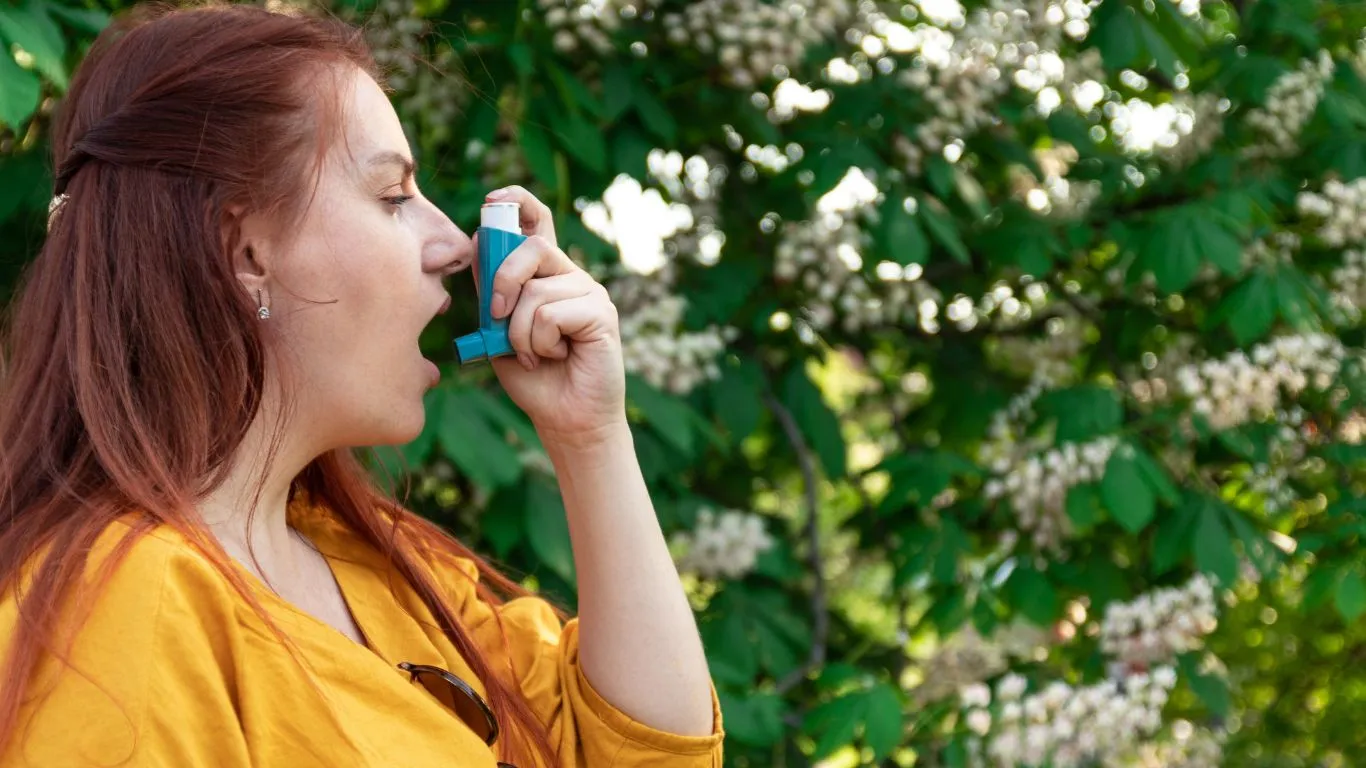Powerful Asthma Recovery Tips After Infections You Need to Know
If you’ve ever had a respiratory infection that knocked the wind out of you—literally—then you know just how frustrating it is to bounce back when you also have asthma. As a pulmonary nurse practitioner, I’ve seen countless patients struggle with getting back to their normal breathing patterns after something like the flu, COVID, or even a nasty cold. In this article, I’m sharing some of the most practical asthma recovery tips after respiratory infections that I’ve recommended in clinic and even used myself. Trust me, recovering doesn’t have to feel like an uphill battle with a brick on your chest. Let’s talk real strategies that work in the real world.
Understanding the Post-Infection Asthma Struggle

One of the things I often tell my patients is: it’s not just the infection—it’s the aftermath that can really wear you down. Even after the sore throat and fever disappear, your lungs might still be struggling to get back on track. That’s because respiratory infections tend to cause lingering inflammation in your airways, which can trigger or worsen asthma symptoms. You’re not imagining the extra wheezing, tightness, or that persistent cough. It’s all part of the picture.
Why Recovery Can Be Tougher for Asthma Patients
Here’s the thing: when your lungs are already sensitive, any added stress—like a virus—can push them over the edge. I had one patient, a marathon runner with mild asthma, who felt like he couldn’t walk a flight of stairs for two weeks after a bout of bronchitis. The infection was gone, but his airways were still flaring up at the slightest exertion. That’s not uncommon at all.
- Inflammation doesn’t disappear overnight. It can linger in your lungs for weeks.
- Increased mucus production clogs up already-narrow airways.
- Reduced lung capacity makes everything from walking to sleeping more difficult.
Asthma Recovery Tips After Respiratory Infections

1. Stick to Your Asthma Action Plan
First things first—don’t wing it. If your doctor or NP (hey, maybe me!) gave you an asthma action plan, now’s the time to follow it to the letter. That means staying on top of your daily controller meds even if you *think* you’re getting better. During recovery, your airways are hypersensitive. Letting your meds slide can cause rebound flare-ups that delay healing.
2. Don’t Skip the Inhaler—Even When You Feel “Okay”
This is a trap I see all the time. Folks start feeling “fine” for a day or two and ditch the maintenance inhaler. But asthma is sneaky—it can lull you into a false sense of security, then pounce. During recovery, using your preventive inhaler consistently keeps inflammation in check and gives your lungs the support they need to truly heal.
3. Hydration Isn’t Just Hype
Honestly, I can’t stress this enough—stay hydrated. Your lungs rely on thin mucus to clear out junk and function properly. After a respiratory infection, your body is still working overtime to clean up the mess. Drinking plenty of fluids helps loosen up mucus, making it easier to cough up without straining your chest. If water feels boring, herbal teas with honey are my personal go-to (bonus: honey soothes that scratchy throat!).
4. Practice Gentle Lung Exercises
Light breathing exercises are super underrated. Deep diaphragmatic breathing can help re-expand your lungs and rebuild stamina slowly. I often recommend simple breath holds or pursed-lip breathing—things you can do from your couch while watching Netflix. It might feel silly, but it really does help your lungs relearn how to work efficiently.
- Inhale deeply through your nose for 4 seconds.
- Hold your breath for 2–3 seconds.
- Exhale slowly through pursed lips for 6 seconds.
I usually tell my patients to start with just 5 minutes twice a day and work up as they feel stronger. It’s a small investment of time that can make a big difference.
Know When to Call Your Provider

There’s a fine line between slow recovery and something more serious. I always tell folks to watch for red flags—things like worsening wheezing, increased use of rescue inhalers, or nighttime symptoms returning. Those are your lungs waving a red flag. Don’t tough it out. Check in with your provider if things aren’t improving within 7–10 days post-infection. Better safe than sorry.
Coming back from a respiratory infection when you have asthma can feel like a marathon, not a sprint. But with a little patience, the right strategies, and some guidance, it’s absolutely doable. Stick around—I’ve got more to share.
Prioritize Rest Without Feeling Lazy

Let me say this loud and clear: rest is not laziness. I’ve had patients, especially busy moms or working professionals, tell me they feel guilty about staying in bed or taking it slow after being sick. But asthma recovery after a respiratory infection takes energy—a lot more than you think. Your immune system is still active, your lungs are working overtime, and even basic tasks can feel like you just ran a 5K. So yeah, napping at noon is absolutely part of the healing process.
When I had COVID a couple years ago, even walking from my bedroom to the kitchen left me breathless. And I’m in the healthcare field—I *know* better! But it still took me by surprise how wiped out I felt. Giving myself permission to slow down made all the difference in getting back on my feet.
Tips to Help Your Body Recharge
- Break your day into small chunks with built-in rest breaks.
- Limit multitasking—one thing at a time helps avoid overexertion.
- Don’t push through exhaustion. If your body says rest, listen.
Fuel Your Lungs with the Right Nutrition

You don’t need to be a gourmet chef or go on a restrictive diet, but what you eat can absolutely impact your recovery speed. After a respiratory infection, you want foods that reduce inflammation and support healing. Think of your lungs as needing some TLC from the inside out.
Here’s a little trick I use with my patients: eat the rainbow. No, seriously! Brightly colored fruits and veggies are loaded with antioxidants that help fight off lingering inflammation. Omega-3s in things like salmon and walnuts are great for your lungs too. And don’t forget protein—it’s essential for tissue repair.
Top Foods to Support Asthma Recovery
- Leafy greens like spinach or kale (rich in magnesium and antioxidants)
- Fatty fish like salmon or mackerel (anti-inflammatory properties)
- Berries (high in vitamin C and flavonoids)
- Turmeric and ginger (natural inflammation fighters)
- Plenty of water to keep mucus thin and lungs hydrated
Honestly, I tell people to avoid processed foods and limit dairy (just temporarily) since those can increase mucus for some folks. And caffeine? Fine in moderation, but it can dry you out, so balance it with extra water.
Environmental Triggers: Clean Up Your Air Space

Here’s something a lot of people overlook: the environment you recover in matters. After a respiratory infection, your lungs are extra touchy. That dusty old ceiling fan? Might send you into a coughing fit. Scented candles or strong cleaning products? Same deal. Now’s the time to give your air space a refresh—your lungs will thank you.
Quick Wins for Better Indoor Air
- Use an air purifier with a HEPA filter—especially in the bedroom.
- Keep windows cracked (weather permitting) for fresh air circulation.
- Dust and vacuum regularly, and consider swapping out your HVAC filter.
- Skip the scented stuff. Opt for unscented laundry detergent and cleaners.
I had a teenage patient once whose asthma flared up every time she cleaned her room post-cold. Turned out she was using a citrus-scented spray that was irritating her lungs. A simple switch to fragrance-free made a huge difference. Little tweaks like that can make your recovery smoother and less frustrating.
Mind-Body Connection: Don’t Ignore the Mental Side
This might sound a little “woo,” but I swear there’s real science behind it: your mental state plays a big role in physical recovery. After being sick, especially with something like COVID or RSV, it’s normal to feel anxious about every little breath. I’ve had patients afraid to exercise again because they’re worried they’ll trigger another attack. That fear can actually make symptoms worse.
Deep breathing, mindfulness exercises, and even guided meditation can help calm your nervous system. I often recommend apps like Calm or Insight Timer to patients. Five minutes a day can make a big impact. And if you’re feeling overwhelmed or depressed? That’s valid. Talk to your provider—we’re here for the emotional side of recovery too.
Mindfulness Tricks I Recommend
- Box breathing: Inhale for 4, hold for 4, exhale for 4, hold for 4. Repeat.
- Body scan meditations to check in with your breath and tension.
- Gratitude journaling to reframe frustration during recovery.
The journey back from a respiratory infection isn’t just physical—it’s emotional too. And when asthma’s in the mix, it’s totally normal to feel a bit shaken. With the right tools, patience, and support, you’ll find your way back to stronger lungs and steadier breathing. Let’s keep going—there’s more ahead to help you through this.
Get Back Into Movement—But Do It Gently

Okay, let’s talk about exercise. I know, I know—just the word can make you want to crawl under a blanket when you’re still feeling winded. But here’s the truth: movement actually helps your lungs bounce back—if you do it the right way. The goal here isn’t to run a marathon; it’s to reintroduce gentle activity that encourages healthy lung expansion and circulation.
After I recovered from a nasty viral infection last winter, I started by walking around my house during commercials. No joke—two minutes here, three minutes there. Then I worked up to slow walks outside (fresh air does wonders), and eventually back to my regular yoga routine. The key? Listening to your body and stopping before you hit your limit.
Easy Ways to Ease Into Activity
- Start with 5–10 minute walks indoors or outside.
- Try gentle yoga or light stretching (I love YouTube for free sessions!).
- Take the stairs slower. Break up chores into mini tasks with breaks in between.
If you start coughing or feel short of breath, that’s your body saying, “Whoa, slow down.” And that’s perfectly okay. You’re not weak—you’re recovering. Give yourself credit for showing up.
Track Your Symptoms Without Obsessing

One tool I highly recommend to my asthma patients post-infection is a peak flow meter. It’s super simple and gives you a clear snapshot of how your lungs are doing day-to-day. I like it because it helps take the guesswork out of “am I getting better?” and lets you spot setbacks early.
But here’s the catch: don’t let tracking stress you out. I’ve had folks spiral because their numbers dipped slightly one day. That’s not the point. You’re looking for patterns over time—not perfection.
Smart Ways to Track Recovery
- Use a peak flow meter once or twice a day—record your readings.
- Log symptoms like wheezing, chest tightness, or nighttime coughs.
- Note any triggers you notice (like changes in weather or activity).
- Share this info with your provider—it helps guide your care.
Bonus: journaling your symptoms can also help you mentally process the ups and downs of recovery. Plus, it’s satisfying to look back and see how far you’ve come.
Support Systems Make a Big Difference
Let’s be real: recovering from a respiratory infection when you’ve got asthma can be isolating. You might look fine on the outside, but inside you’re still struggling to take a deep breath or get through the day without needing your rescue inhaler. That’s why community and support are huge.
Whether it’s friends who check in, a partner who picks up the slack, or an online support group, don’t go it alone. I’ve referred several patients to local asthma support groups, and it’s wild how helpful it can be just to talk to someone who gets it.
Ways to Build Your Recovery Circle
- Tell close friends or family what you need—don’t assume they know.
- Connect with asthma-focused groups on Facebook or Reddit.
- Check with your clinic—some have in-person or virtual support programs.
Even something as small as texting a friend, “Today was rough. I’m exhausted,” can make recovery feel less lonely. Emotional support is just as healing as physical rest, I promise.
When You’re Not Bouncing Back—What to Do Next
Recovery isn’t always a straight line. If you’re doing everything right but still feel stuck weeks later, it might be time to dig deeper. Sometimes a lingering infection turns into something like post-viral asthma, bronchitis, or even pneumonia. You know your body best—if something feels off, trust your gut and call your provider.
Here’s what I typically tell my patients: If your symptoms haven’t improved (or have gotten worse) after two weeks, especially if you’re still relying heavily on your rescue inhaler, it’s time to check in. You may need a steroid taper, a medication adjustment, or even a chest x-ray.
Your lungs deserve that attention, and so do you.
References
- Asthma and Allergy Foundation of America
- American Lung Association
- Centers for Disease Control and Prevention
- Mayo Clinic
Disclaimer
This article is for educational and informational purposes only and is not intended as medical advice. Always consult your physician, nurse practitioner, or other qualified healthcare provider with any questions you may have regarding a medical condition or treatment plan.
If you’ve made it this far—thank you. Whether you’re supporting someone with asthma or walking through recovery yourself, know that it’s absolutely possible to heal, rebuild, and breathe deeply again. You’ve got this, one breath at a time.

Bianca Nala is a compassionate Nurse Practitioner with a strong background in primary and respiratory care. As a health writer for Healthusias.com, she combines her clinical expertise with a talent for clear, relatable storytelling to help readers better understand their health. Bianca focuses on topics like asthma, COPD, chronic cough, and overall lung health, aiming to simplify complex medical topics without losing accuracy. Whether she’s treating patients or writing articles, Bianca is driven by a single goal: making quality healthcare knowledge accessible to everyone.





